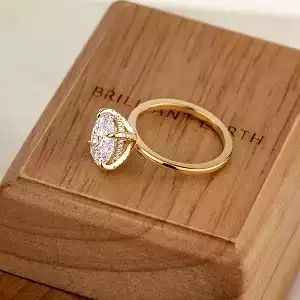- Zola vs Minted for 2024 Weddings - December 8, 2023
- Morganite vs Moissanite Ring: What’s Better? - May 25, 2023
- How to Tell if 925 Silver is Real? All You Need to Know! - April 23, 2023
The main differences between Moissanite and diamonds are:
- Color of scintillation (rainbow vs white)
- Cost and availability
- Hardness
- Natural or Lab Grown vs Synthetic
- Level of Heat Resistance
When it comes to engagement rings, the most traditional option is a diamond one. From center cut diamonds with optimized sparkle and shine to ethically sourced and conflict-free princess cuts, the sheer variety of cuts, styles, and types of diamonds is amazing. But now another gemstone is giving diamonds a run for their money: moissanite.
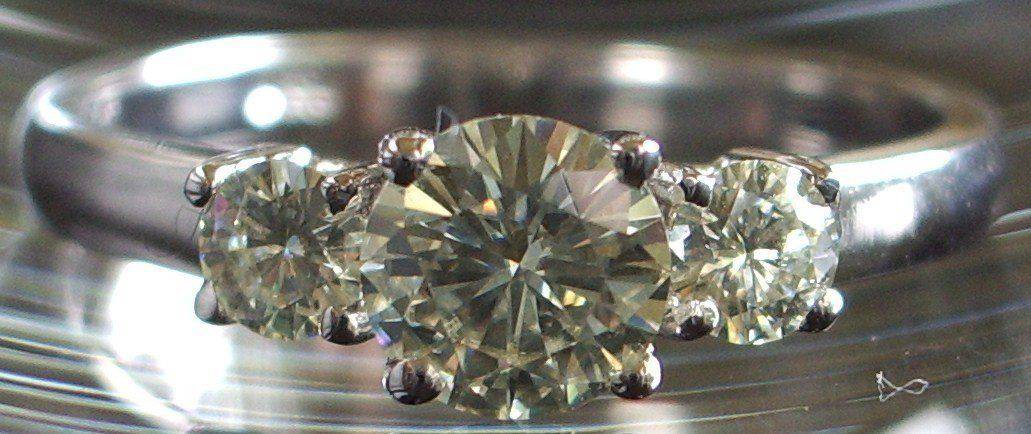
Moissanite joins a trend of alternative gemstones that are more affordable than diamonds. Life and Style featured moissanite as an alternative to a diamond ring, alongside other gemstones, such as morganite, aquamarine, sapphires and emeralds.
And it isn’t one article alone. In fact, moissanite proves itself a contender as a diamond alternative based upon market predictions. It’s projected to grow as an industry six and a half percent through 2025. By that year, the industry will be worth over forty eight million dollars. And North America is where moissanite is anticipated to be in highest demand. But while Moissanite does seem to be gaining traction, just how does it fare when compared with a diamond?
In this article, we’ll be comparing moissanite vs diamonds and see which of the two makes sense for your engagement or wedding ring, and take a close look at both the disadvantages and advantages to both.
Just how much is there a demand for alternatives to diamonds?
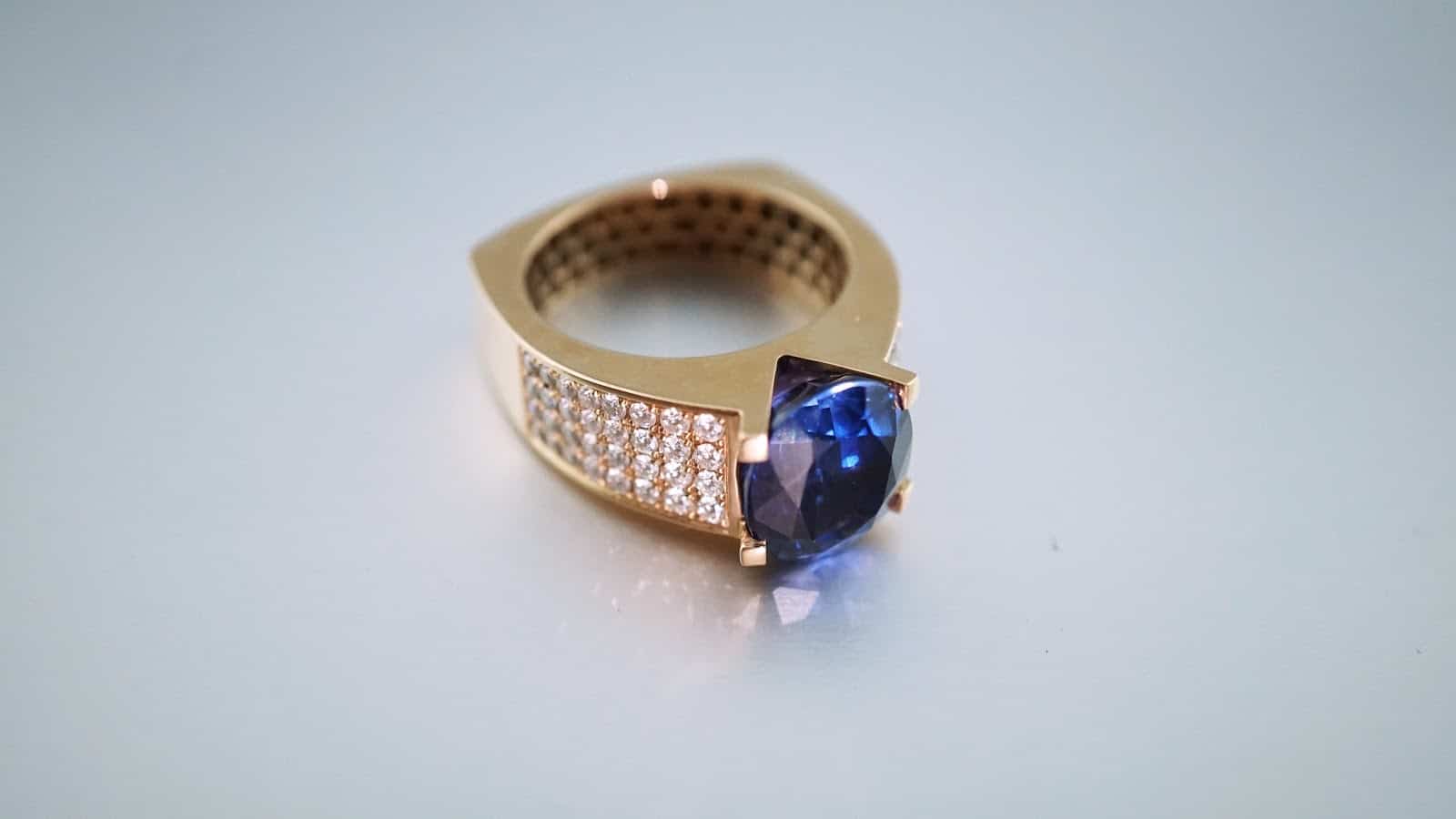
Make no mistake: while diamonds have always been, and continue to be the most popular option for engagement rings. But at the same time, there has been a demand for alternatives for a while.
That’s for a few reasons but mostly comes down to three factors: price, style, and lifestyle.
- Price: Overall, most gemstones and alternatives to diamonds tend to be more affordable. Especially among millenials, there is a drive to reduce costs for weddings overall. While the average price of a wedding in the United States is over thirty thousand dollars, more and more couples are planning to spend under ten thousand dollars. And that means cutting back on the cost of engagement rings as well.
- Style: More couples also desire a unique look. While it’s true gemstone rings also often feature smaller diamonds, an alternative to diamonds, even something that looks more similar, like moissanite, can provide a slightly different look that breaks with the diamond tradition.
- Lifestyle: While it’s true that companies like Brilliant Earth are stepping up standards and applying higher criteria on their diamonds, when it comes to both ethical sourcing and environmental stewardship, some are attracted to diamond alternatives for an option that is less embedded in what has been an at times troubled industry (not to say that gemstones are free of these issues).
Are couples really spending less on engagement rings specifically?
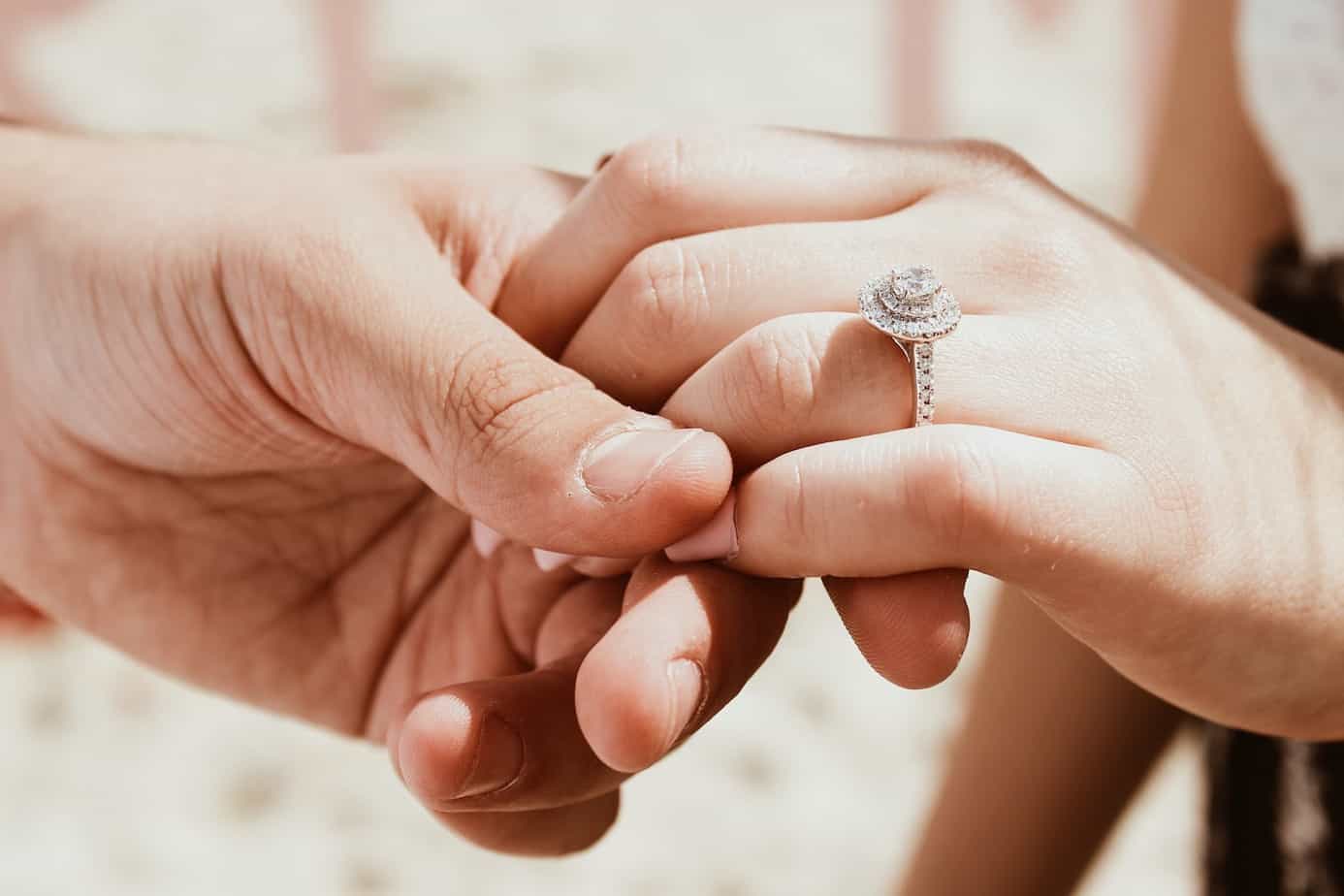
Yes. While couples are cutting back on wedding costs overall, it is also true that a big target of those cost-saving measures in the engagement ring itself. And that in part explains why alternatives to a diamond ring are becoming a bit more popular.
Despite the old advice (not grounded in any specific reality) that one should spend several months of a salary on an engagement ring, young couples beg to differ.
In a survey conducted of three thousand couples, just eighteen percent of Gen Z’s and thirty two percent of millenials thought they should spend over twenty five hundred dollars on an engagement ring. That’s an interesting statistic, especially given that the average cost of an engagement ring right now hovers at fifty-six hundred dollars.
Is the move towards diamond alternatives just a trend?
Signs point to no. In fact, the rise of alternatives like moissanite and other gemstones can continue over the past several years. A report by the Philadelphia Inquirer tracked the rise of engagement ring alternatives.
Online shopping, both through more traditional jewelry like James Allen and Kay Jewlers, and also outlets like Pinterest have given rise to an influx of more options, more customization, and more diamond alternatives.
As a fashionable way to express one’s individuality, and express and symbol of love and commitment, and an investment anyway you cut it, it’s no wonder that not only diamonds are offered now when it comes to engagement rings.
Are diamond rings going out of fashion?

However, it is at the same time important to recognize the staying power of the diamond ring as a sign of elegance, love, and devotion. Diamond rings remain the most popular, and account for nearly all the most popular trends across the country.
Surveys indicate that the preference for diamond rings to gemstones is over sixty-five percent favoring diamonds. While that does show that alternatives like moissanite are still a significantly attractive option to many, it also stands true that diamonds will not be surpassed in the foreseeable future.
And with many opting for the best of both, by adding gemstones to their diamond ring or selecting a gemstone ring with tiny diamonds, it can be disingenuous to say either gemstones or diamonds have little role in the engagement and wedding ring market.
What factors do I need to consider when deciding what gemstone is right for me?
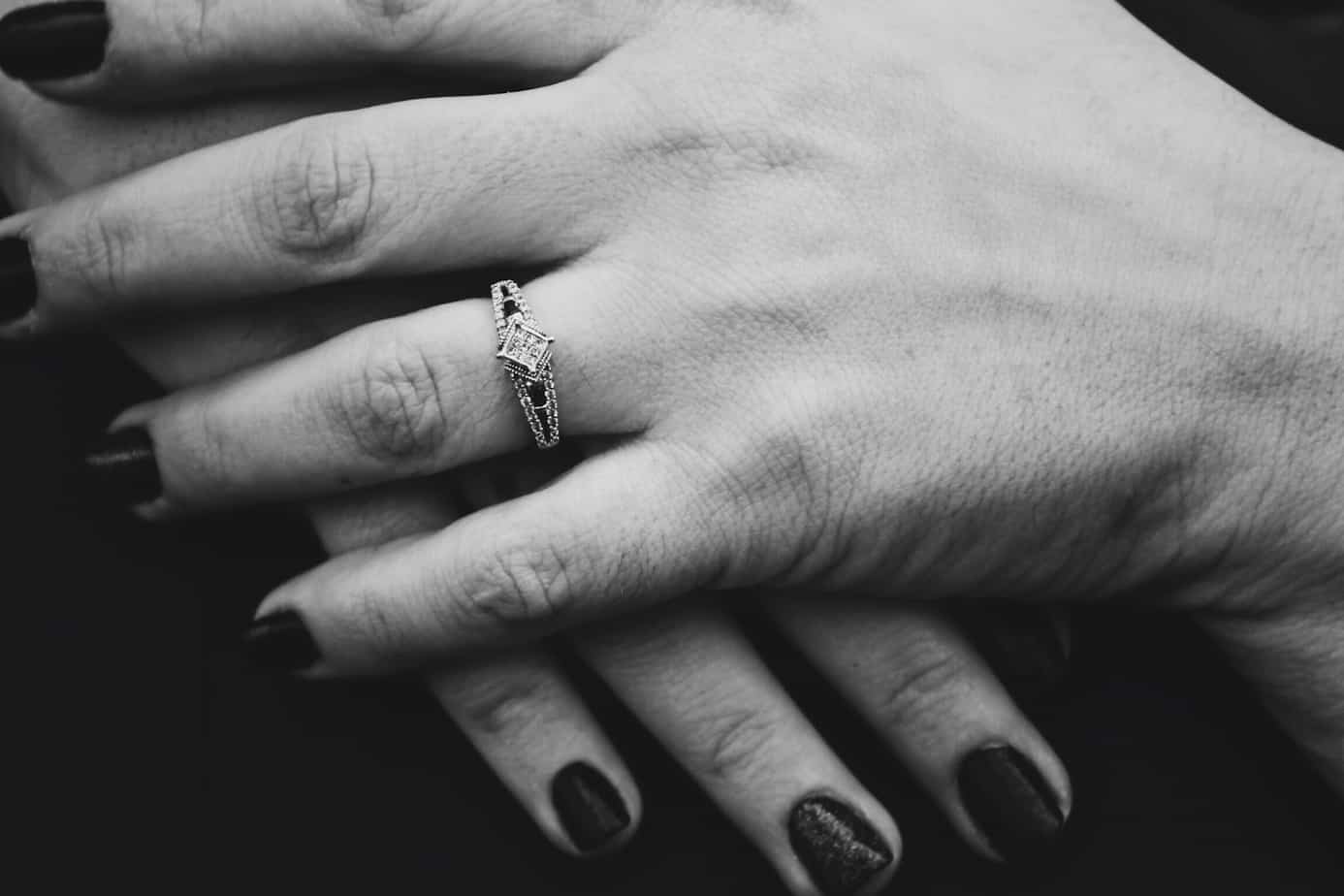
When deciding between moissanite vs diamond rings or any gemstones, it’s important to keep several things in mind.
For one, one gemstone is not right for everyone. Depending on budget, lifestyle, and personal preferences, you can select a quality ring with a good degree of variability. For another, even the seemingly best option will not be a perfect one. For every choice, there are advantages and drawbacks.
That said, going in with a set of criteria can make a big difference if you select something that makes sense for you, and for avoiding impulsive purchases:
Natural vs Synthetic
There is a good deal of misunderstanding when it comes to synthetic vs natural gemstones.
- Synthetic gemstones are grown typically in labs and can cost up to fifty percent less than natural gems. They actually have the composition of naturally occurring gemstones, but are grown under environmentally controlled circumstances, tend to be more consistent in color and can potentially but more saturated as well.
- Natural gemstones will be your most expensive option, and are, as the name implies, naturally occuring. These are mined, although something like pearls may also be found in bodies of water.
- Simulant is the third, and less desirable category for many when it comes to gemstones for wedding jewelry. While the appearance is meant to approximate that of a natural or synthetic gemstone, the composition is quite different. They are the most affordable, and thus, the least valuable but offer some suprisingly advantageous characteristics.
Price and Affordability
Forget what is expected or lore around engagement rings and instead be realistic about what you can spend. Of course, opinions differ on how much you should spend, but it should always be in proportion to your salary and how much you’ll be spending on the wedding overall, as well as any expenses you anticipate after, such as downpayments on homes, student loans, and more. Dave Ramsey, a bestselling author, radio show host and buisness man who specializes in personal finance, recommends you spend no more than one month’s salary on an engagement ring.
Keep in mind that there are budget options with all kinds of gemstones–it’s more a matter of how many choices and how big the carat you’ll be able to afford. And if you are looking to save money even on a diamond ring, there are many ways to do so, including buying a slightly off carat number.
Color
Gemstone color consists of three qualities–hue, tone, and saturation. For many gemstones, there is a spectrum of colors within a certain family. Hue refers to general color that you first see. Tone is how light or dark the color is, while saturation refers to the strength or intensity. These of course are matters of personal preference.
Hardness
This is a critical factor. Gemstone hardness will help determine how well the gemstone can hold up under different conditions.
Hardness is ranked on the Mohs scale, from one to ten, with ten being the hardest. Hardness will tell how scratch resistant it is. Anything rated at seven or lower, such as quartz, has the ability to inflict scratches on the same material.
Toughness
One of the biggest mistakes people make when selecting a gemstone is either lumping toughness and hardness together or mistakenly thinking they are the same thing. In fact, toughness refers to the molecule composition and is rated on what is called a fracture toughness scale. This scale measures instead of how prone to chipping the gemstone is. A value over 200,000 is considered rather tough, while some of the least tough stones are only a few hundred on the scale.
Environmental Resistance/ Stability
Environmental changes and circumstances can have just as much of an impact on a gemstone as other key characteristics, such as toughness and hardness. Something may be very tough, for instance but not as heat resistant.
- Heat Resistance as you can imagine tells you how well a gemstone performs in especially hot conditions. However, likely the most pressing problem you will run into is not so much the temperatures themselves as temperature changes. Some gemstones, including opal and tanzanite, suffer from temperature shock, which can result in cracks or other forms of damage.
- Humidity Resistance is another concern, especially if you live in a particularly humid climate. With some gemstones, humidity can cause cracks to form.
- Chemical Exposure is more widespread than you might imagine; in fact, chemical exposure, in addition to what we consider more industrial chemicals, also includes everyday chemicals, such as hairspray, makeup, and perfume. Even cooking oils can cause issues. The main concern here is the gemstone becoming discolored.
- Resistance to Light is the final primary concern when it comes to considering how durable the gemstone will be. More the most part, this is a concern for colored gemstones losing their color, though a few gemstones do fare poorly under a light in general.
-
Fire Dispersion refers to how much shine and sparkle, so to speak that you’ll notice. In more technical terms, this refers to how light is reflected and is also lumped in with brilliance. Fire dispersion is what the finest cuts of diamonds, in particular, are praised for.
Availability
Availability is, of course, a fairly straightforward principle, but it will impact both price and variety. The good news is that you can now easily select a wide range of gemstones, but what it comes down to is how many options you’ll have and who you’ll be able to purchase from, at a price point that meets your needs.
What are the main differences between a moissanite vs diamond ring?
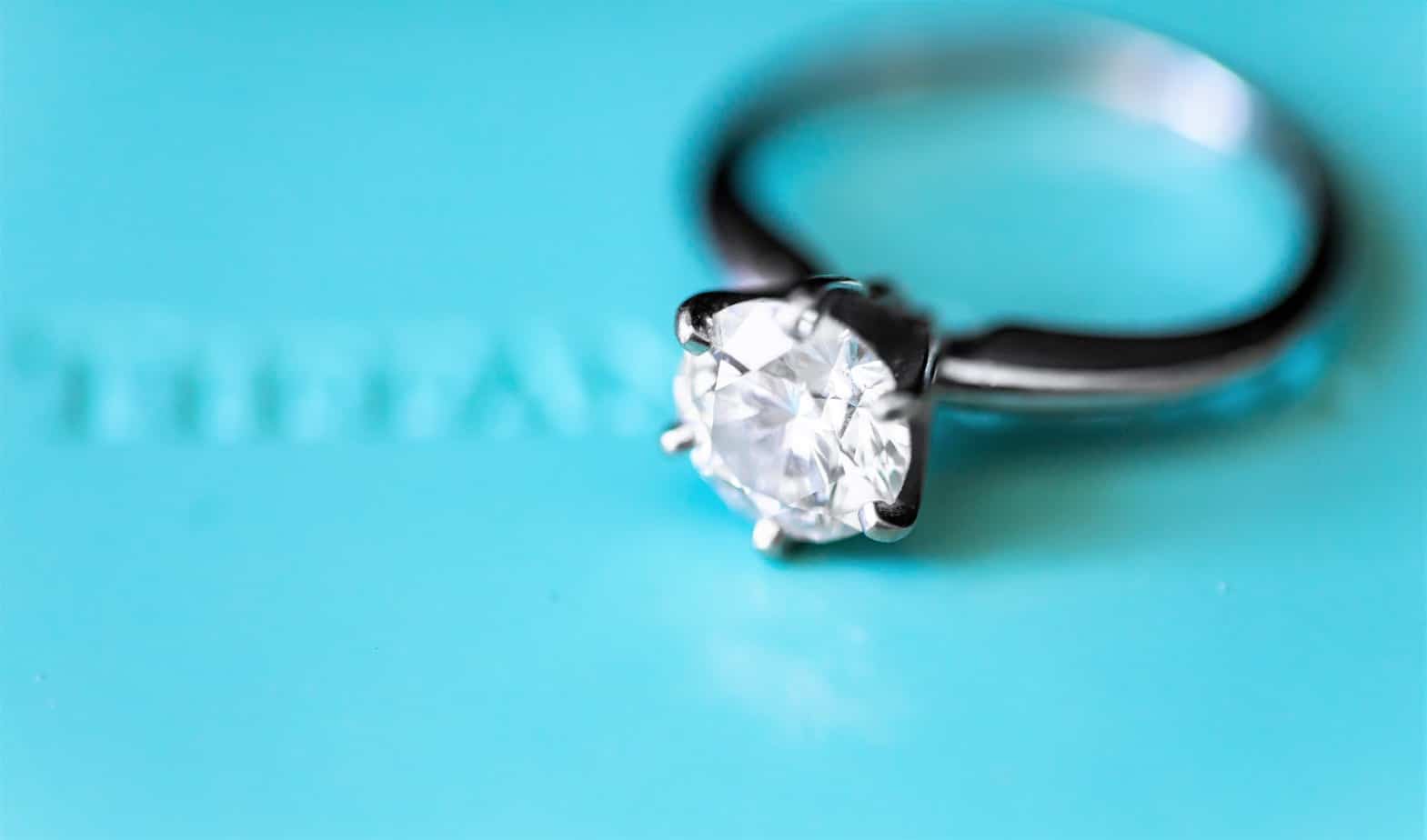
Now that we’ve established the key criteria for selecting gemstones, let’s take a look at both the similarities and differences between moissanite and diamonds to see which option makes more sense for you.
Are there options for synthetic vs natural?
- Diamonds are naturally mined but also lab-grown. Lab-grown diamonds are more affordable, more widely available, and more consistent in terms of hue, brilliance and other characteristics.
- High-Pressure High Temperature or Chemical Vapor Deposition are two ways of producing synthetic diamonds.
- Man made diamonds are just as high of quality as natural diamonds and may be a better option.
- When it comes to Moissanite, moissanite is actually a diamond simulant. Moissanite, in fact, is silicon carbide. It’s a form of the same substance that is used in everything from ceramics to car brakes. Nonetheless, it has a number if excellent properties.
How expensive is moissanite vs diamonds?
Of course, when we’re discussing how expensive a gemstone is, we’re more or less speaking in generalizations. However, a fairly simple way to understand differences in cost is to take into account the average market price per carat.
- Diamonds are considered fairly expensive and average about four thousand dollars per carat.
- Moissanite can be up to ninety percent less expensive. Moissanite, depending on the specific classification, ranges from three hundred dollars for classic moissanite, to six hundred dollars per carat for highest quality moissanite.
What is the general color of diamonds vs moissanite?
Color is more a matter of preference, and you may have more options than you originally imagined.
Diamonds can be clear, but there are also fancy colored diamonds. Colored diamonds include varieties in black, brown, purple, gray, white, blue, yellow, orange, red, green and pink in a variety of hues and intensity. Colored diamonds are more rare, with red diamonds being among the most rare. “Pure” diamonds, on the other hand, are colorless and clear.
The diamond color scale ranges from zero, which is colorless, to ten which is the most colored. Some colored diamonds, such a Blue Hope Diamond, are quite expensive, while dark yellow and brown diamonds are much less expensive than clear diamonds. Overall, the greatest demand is for clear diamonds.
Moissanite like diamonds, are commonly clear but also come in ‘fancy colors’. However, unlike diamonds, they are not technically graded, so it can harder to achieve consistency. Moissanite has a similar spectrum of colors and hues, from almost colorless to deep brown.
While diamonds get their colors mostly from natural imperfections, many-colored moissanite are achieved through chemical vapor deposition. Chemical vapor deposition is a synthetic process where the bottom portion of the stone is coated and then coloring is applied–in essence, the entire stone is not colored but has the illusion of being fully colored. You can find moissanite in yellow, clear, black, brown, gray, gold, pink, purple and blue.
How does moissanite compare with diamond in terms of hardness?
This is where we really start to see a significant distinction between a diamond and moissanite. On the Mohs hardness scale, a diamond is rated at the very hardest, with a rating of ten. Moissanite, meanwhile, is a nine and a quarter. That ranks it as a still rather hard gem. For comparison’s sake, emeralds are around seven to seven and a half.
Still, there is no denying that diamonds are consistently harder than moissanite. That means diamonds are more scratch-resistant than moissanite.
How prone to chipping is a diamond compared with moissanite?
Chipping, as you’ll recall, can predicted based on a gemstone’s rating on the fracture toughness scale. Both diamonds and high-quality moissanite are considered high on toughness meaning neither is especially prone to chipping compared with other gemstones. Be wary of any sellers claiming their moissanite is prone to chipping; while it is a bit more likely when compared with the finest quality diamond, it may mean you’re looking at poorly constructed moissanite.
How well does a diamond hold up to environmental changes compared with moissanite?
A diamond is known to be exceptional in terms of overall wear in a variety of environments. But how does it compare with moissanite?
- Heat: Diamonds burn at extremely high temperatures which you might see in a house fire. They can be prone to fractures as a result of thermal shock, though this is not common and takes fairly drastic fluctuations. Moissanite is also known to handle temperature fluctuations fairly well. But moissanite is notably more resistant to high temperatures–while diamonds start to fracture in fairly high heat, moissanite can withstand temperatures as high as two thousand degrees Fahrenheit.
- Chemical and light exposure: Light and chemicals are two elements we come into contact with on a daily basis. Diamonds can withstand nearly all chemicals, especially the ones we use on a more everyday basis (if you do have an industrial job, you might consider buying a silicone ring to wear to work). Moissanite is also considered highly durable against chemical and light exposure.
Bottom Line: Contrary to what might be popular conception, both moissanite and diamonds are considered highly durable.
- Fire Dispersion: As a reminder, fire dispersion refers to the sparkle or shine, or overall brilliance. Many things can impact how brilliant any gemstone appears. The diamond cut, for example, can have an impact. But generalizing between the two:Moissanite is known to be brilliant, which is why it’s a popular alternative to a diamond. The sparkle tends to be rainbow or multicolor in nature.Diamonds of the finest cut and quality can be quite brilliant, though there is a wide range in terms of brilliance. At its best, they are full of scintillation and exude a clean, bright white. The biggest difference is the color of the shine.
How available are diamonds vs moissanite?
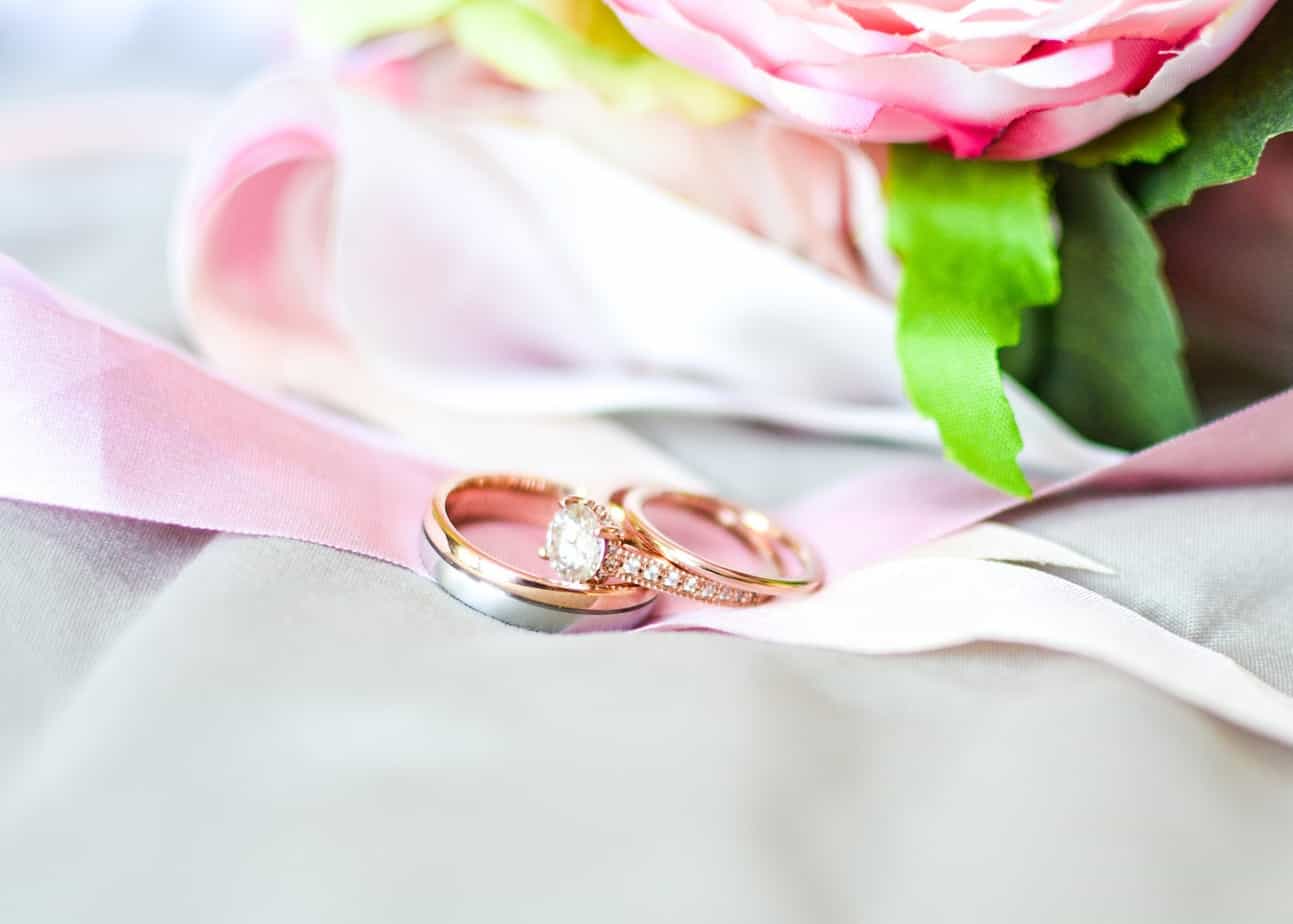
In terms of availability, you don’t have much to worry about. Both diamonds and moissanite are widely available, especially since they can be manufactured or grown in labs (as well as mined in the case of natural diamonds). Because of this, you can find both diamonds and moissanite at a wide range of cut, clarity, color, carat, and thus, price points. However, it may be easier to find engagement rings with diamonds.
Is a diamond or moissanite preferable for an engagement ring?
When it comes down to it, both diamonds and moissanite are reasonable options. However what is mostly comes down to is personal preference.
Here are the pros and cons of each:
Diamonds
- Are harder, with a Mohs rating of ten
- Are more expensive
- Have classic, white scintillation
- Can endure slightly lower temperatures
- Are valuable
Moissanite
- Is slightly softer
- Can withstand extreme temperature fluctuations
- Have a multicolored scintillation
- Are not valuable
Where can I buy diamond or moissanite rings online?
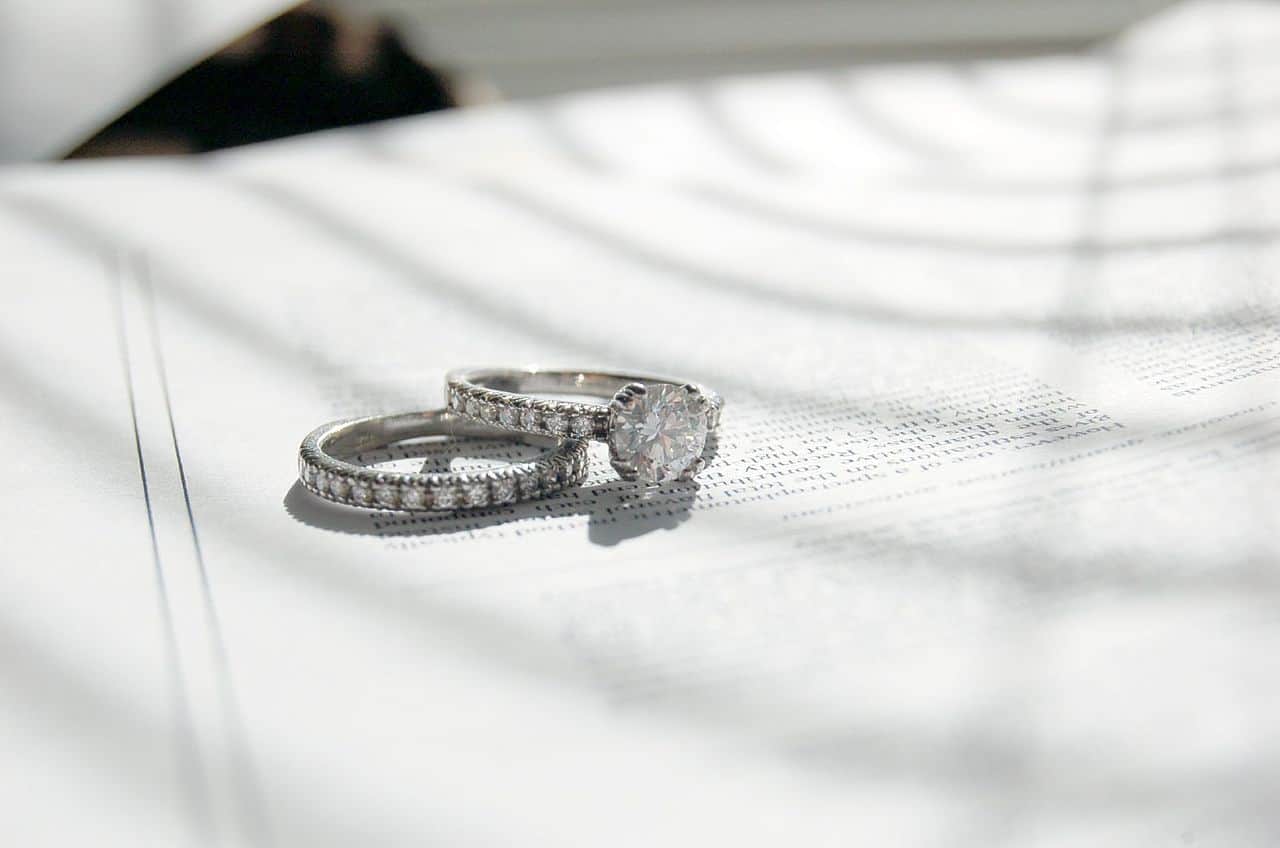
The good news is no matter if you prefer moissanite or diamonds, you have a number of options. For both diamond and moissanite, here are some of our top recommendations:
- Brilliant Earth: Brilliant Earth sells ethically sourced diamonds and gemstones that adhere to more strict standards than other companies. Not only do they follow the Kimberly Process, but they also apply responsible sourcing standards, recycling precious metals, and even supporting local economies.
- James Allen: Settled on diamonds? Another option is James Allen. You can design your own engagement ring, select from one of the world’s largest selection of diamonds, and rings come with a lifetime warranty.
- Charles & Colvard: This company specializes in moissanite and has been crafting rings for twenty years. They offer a variety of payment options as well as partner with some brick and mortar stores.
Make that proposal happen! Get started designing and create an engagement ring as unique as the wearer. To help pull off the perfect engagement, head over to Brilliant Earth's proposal guide.
Recommended Reads:
- The Best Places to Buy Moissanite Engagement Rings Online
- Brilliant Earth vs James Allen – Which One Is a Better Diamond Vendor?
- Brilliant Earth vs Blue Nile Compared: Which is the Better Online Jewelry Retailer?
- Brilliant Earth vs James Allen – Which One Is a Better Diamond Vendor?
- James Allen vs Tiffany Online [2019] – Which is Best for Finding an Engagement Ring?

